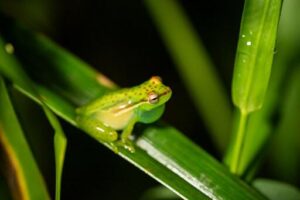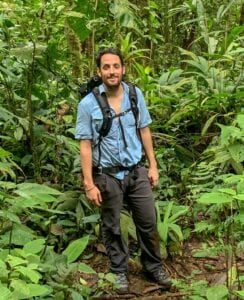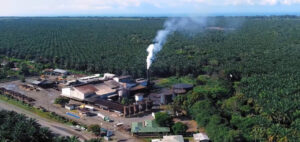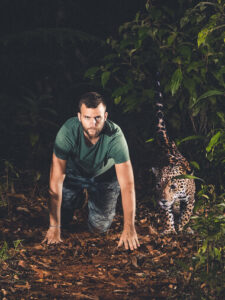The planting process took three days, and the team used the stems of giant leaves from a local African Oil Palm plantation to make and place the stakes. This practice of repurposing by-products from environmentally damaging land uses for ecologically friendly purposes is an example of how we can use resources that would otherwise go to waste.
One species that stood out was the Pleodendron costaricense or Canelillo. This species is critically endangered, with only four known examples in existence. Osa Conservation collected 200 seeds from one of the four remaining trees and managed to germinate two of them. Together we planted these two young trees in a suitable spot. This gesture demonstrates the importance of the project and how vital the reforestation of the Osa Peninsula is.
The tree species planted were carefully chosen to create a diverse and resilient ecosystem. The species list included Peltogyne purpurea, Couratari scottmori, Ormosia coccinea, Inga sapindioides, Inga rubiziana, Paramachaerium gruberi, Carapa guianensis, Cedrella odorata, Virola crysocarpa, Pleodendron costaricense, Caryocar costaricense, Inga bella, Minquartia guianensis, Genipa americana, Handroanthus crysanthus, Brosimum utile, Brosimum costaricanum, Enterolobium cyclocarpum, Cupania rufesens, Hymenea courbaril, Parkia pendula, Prioria copaifera, Dussia sp, Pouteria sp, Cordia aliodora, Pentacletra macroloba, Tabebuia rosea, Cojoba arborea, Platimisium pinnatum, Inga multijuga, Inga Alva, Calophylum brasiliense, Handroanthus impetiginost, and Ceiba penthandra.
With the professional expertise from Osa Conservation, the project’s success will be measured based on the mortality rate of the trees. Since they are accustomed to a mortality rate of around 30-35%, anything less than that would be considered a great success.




